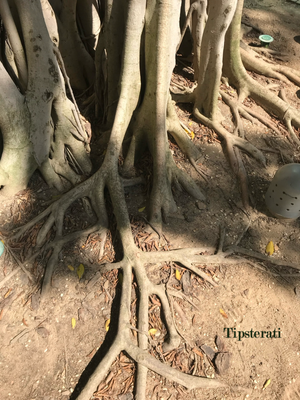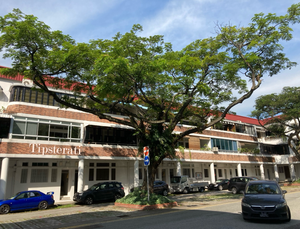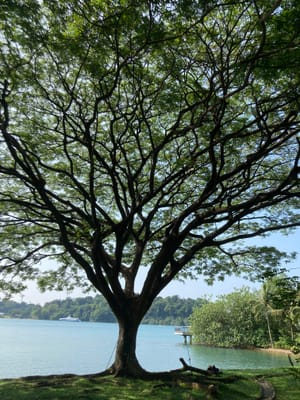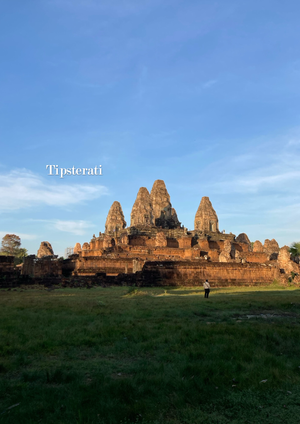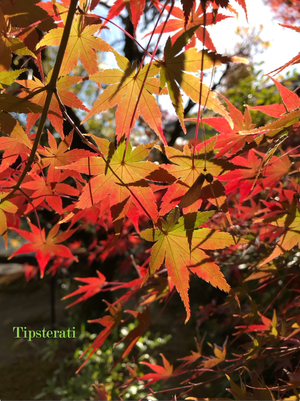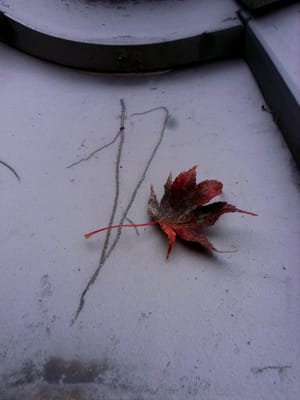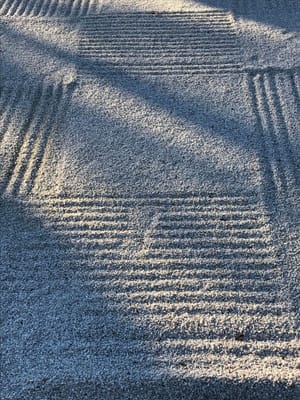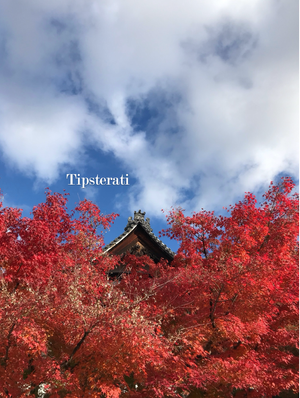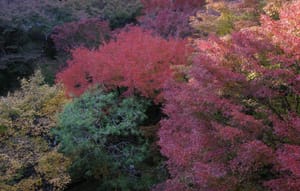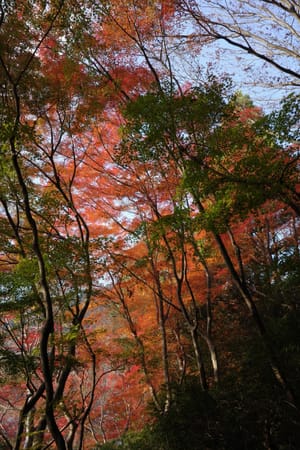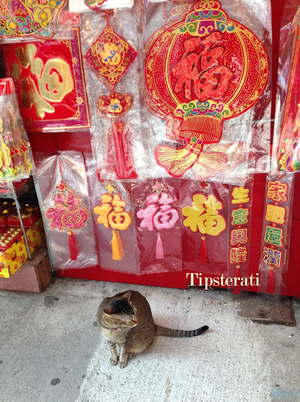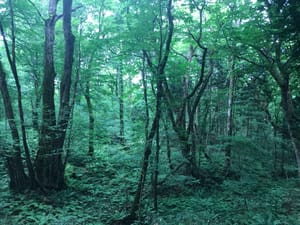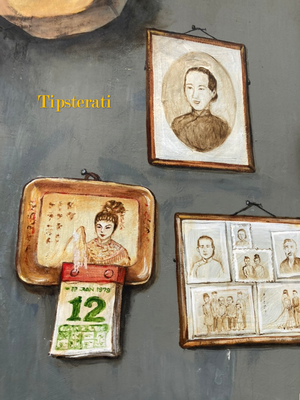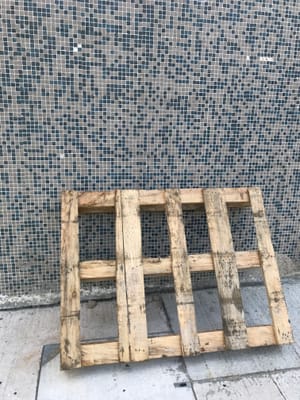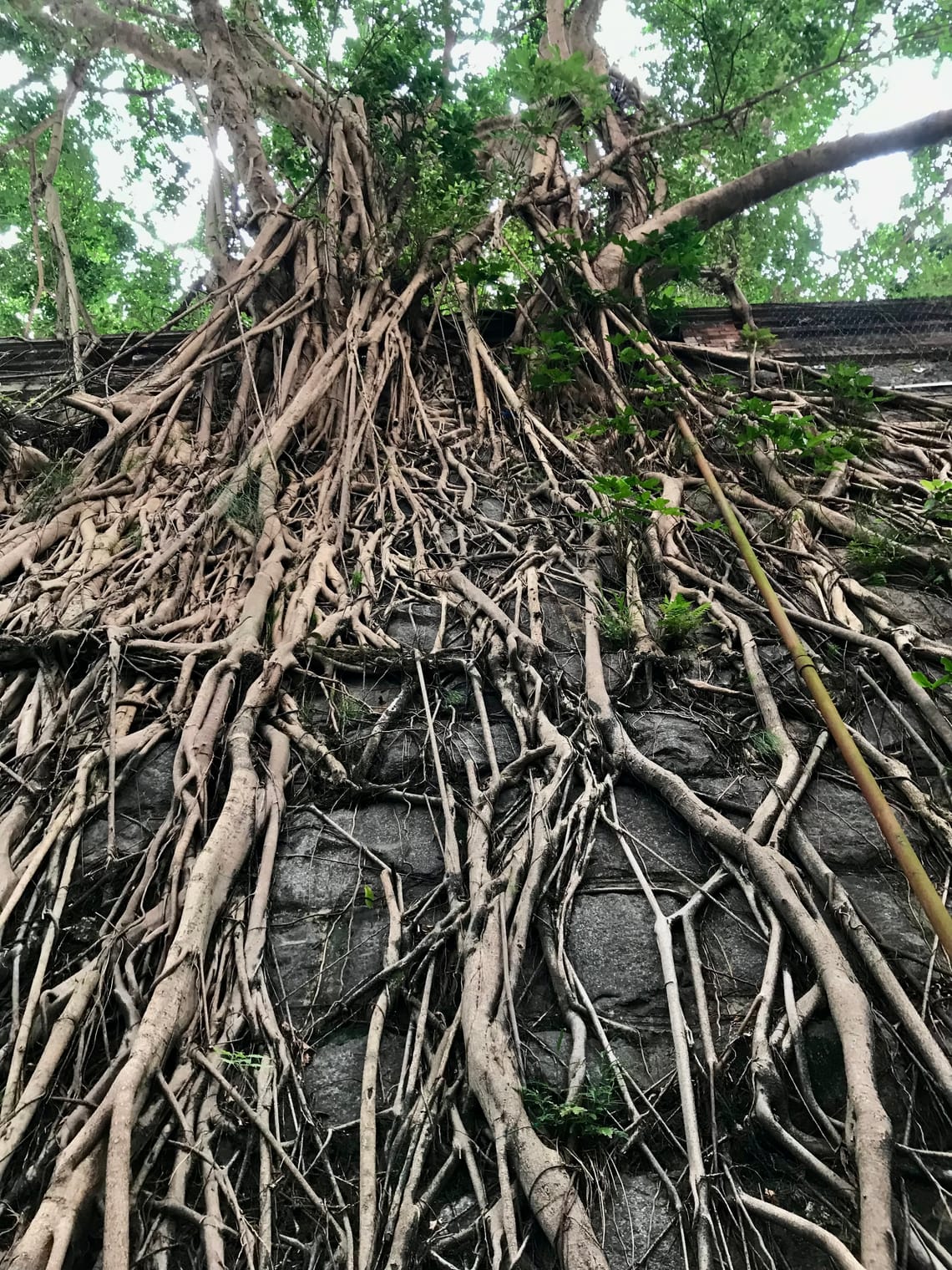
The Banyans of Hong Kong
The Chinese banyan (Ficus microcarpa) begins life ignobly in a pile of bird poop. In the forest, its seeds, having passed through the bowels of a friendly bird, may chance upon a hospitable nook in a moist crook between trunk and branch. From there, it grows into an epiphyte high above ground, sending its roots down to the earth. Once they find sustenance, the roots will lignify and gradually form a tight, muscular lattice round its host tree, strangling it to death. No wonder that this tree is also known as the strangler fig.
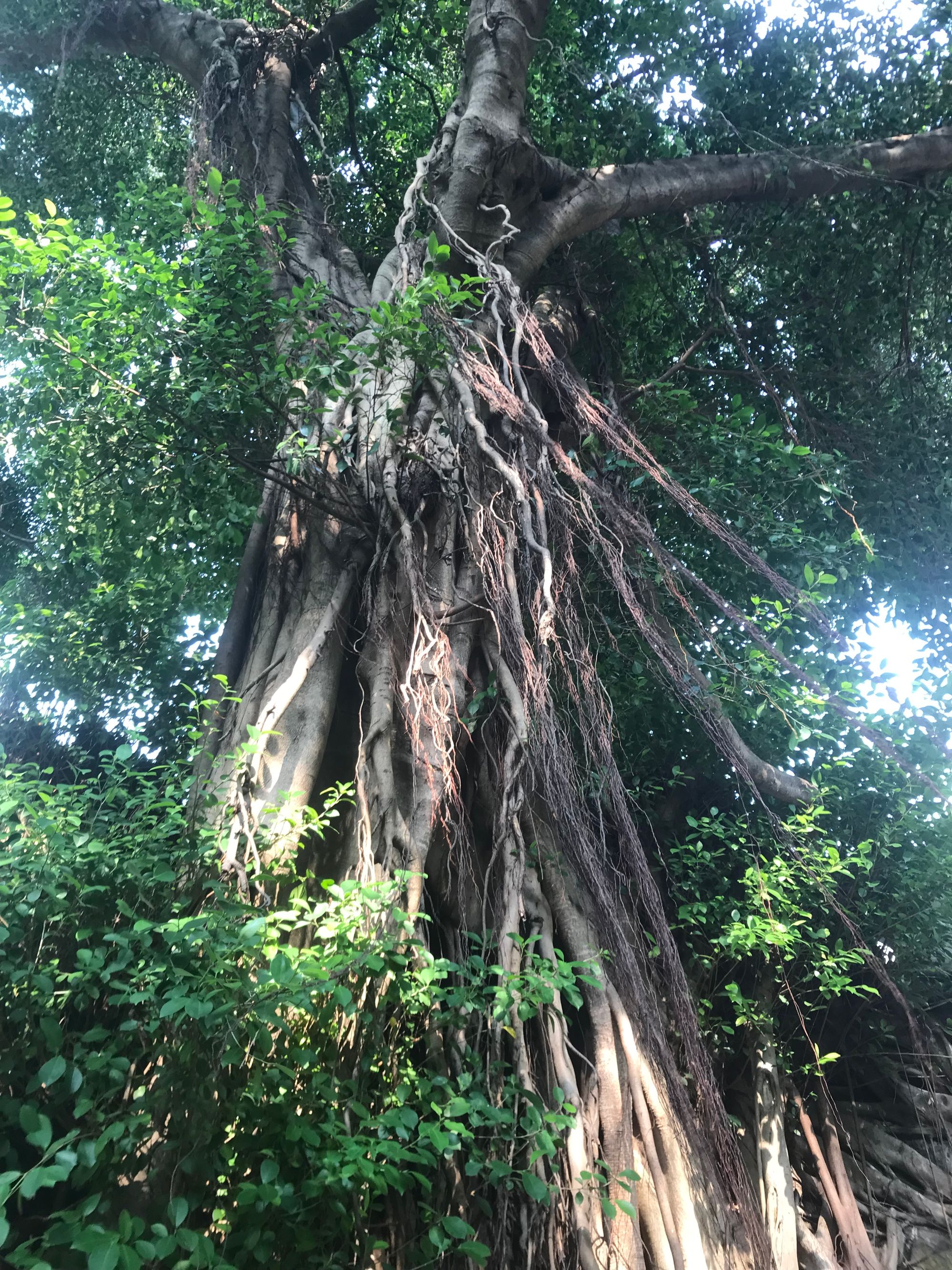
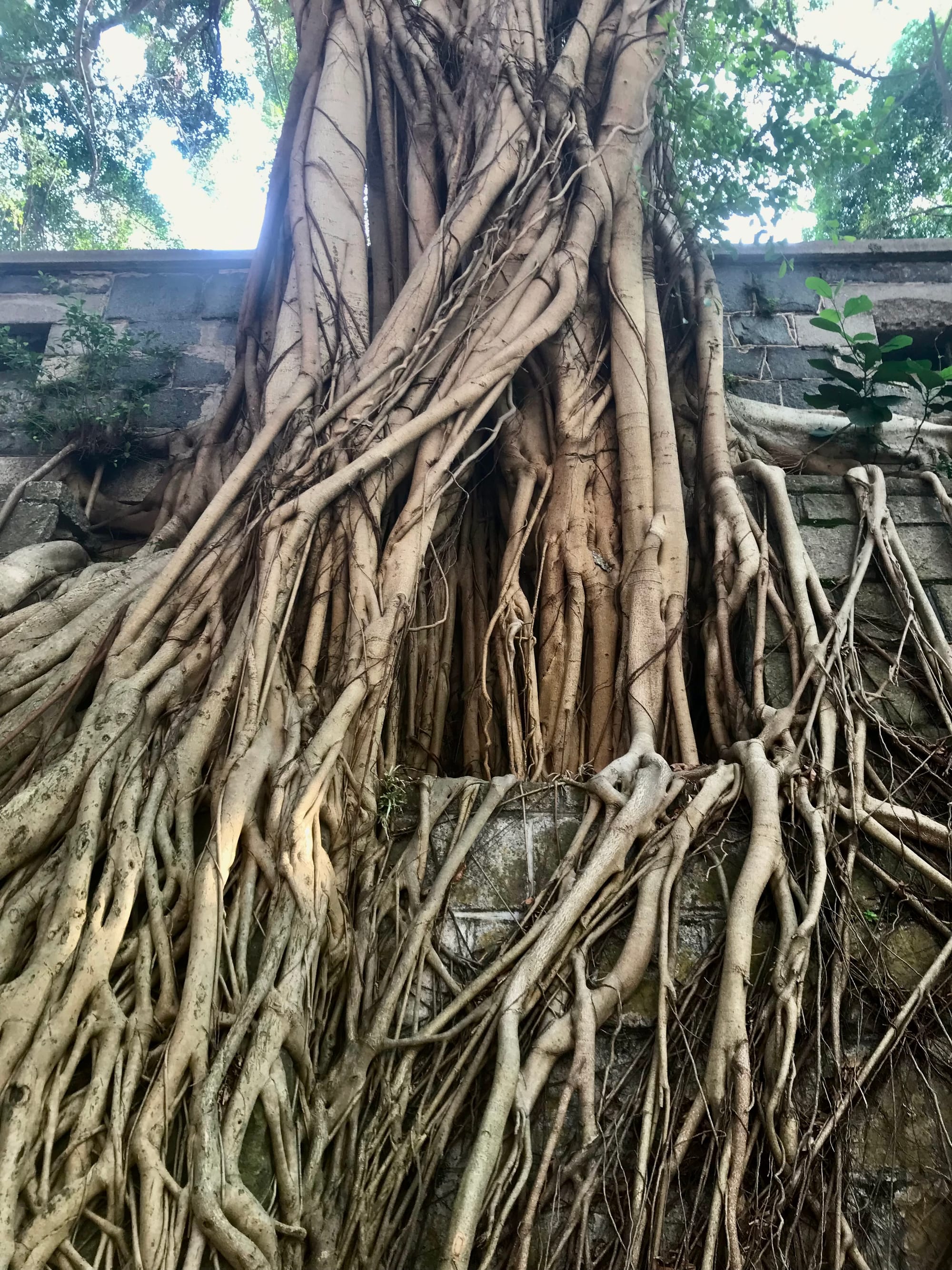
©Wendy Gan 2024
In the city of Hong Kong, the Chinese banyan has found a new host and, in doing so, has turned its somewhat gruesome strangling habit into urban artistry. The old stone walls shoring up the slopes of Hong Kong Island abound with crevices that are good homes for banyan epiphytes. The search for nutrients results in a stunning spread of roots fanning out along the walls.
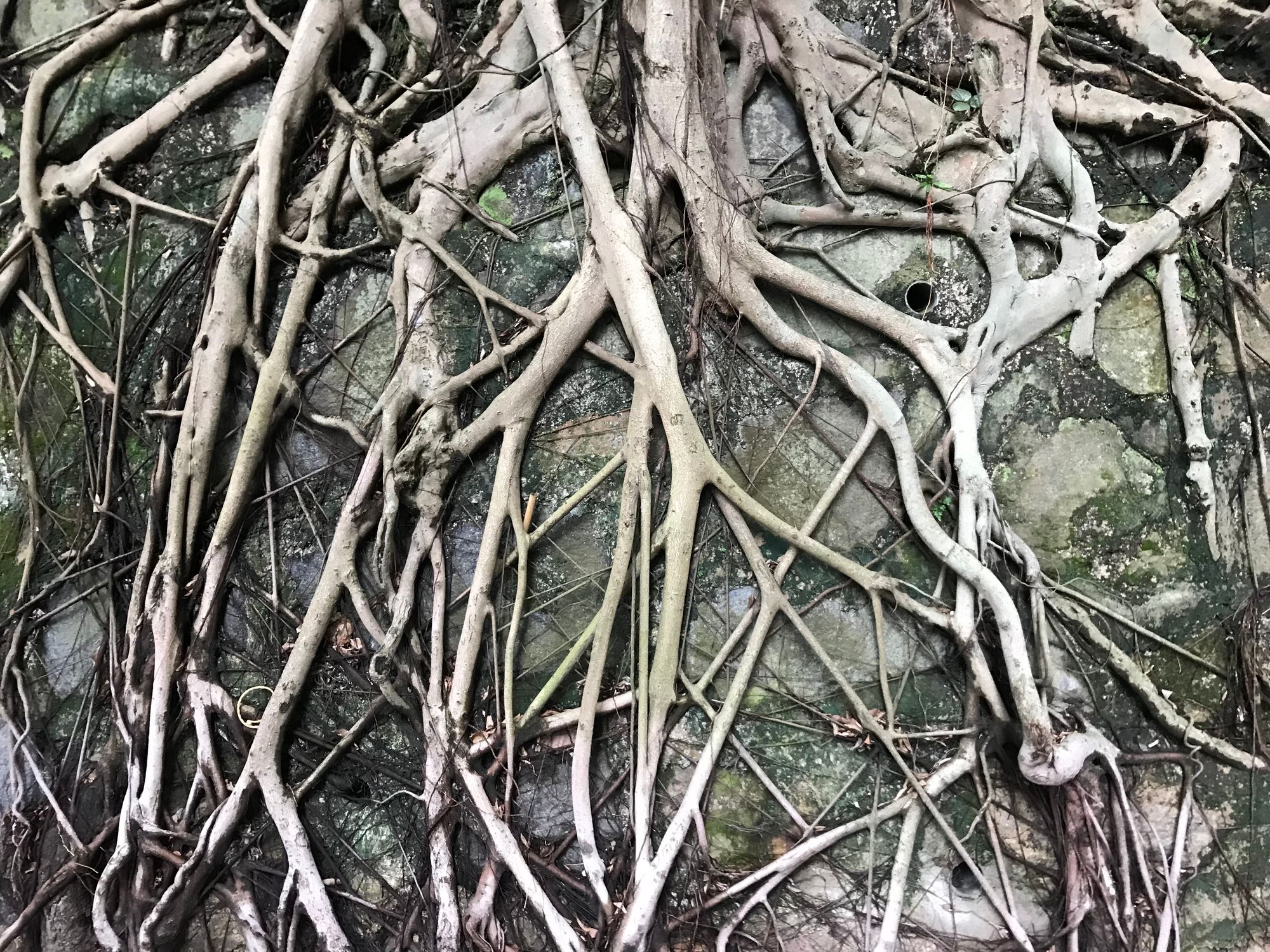
The roots probe for gaps to reach soil and water, sometimes following the grouting of tiles on the floor or cracks in the pavement.
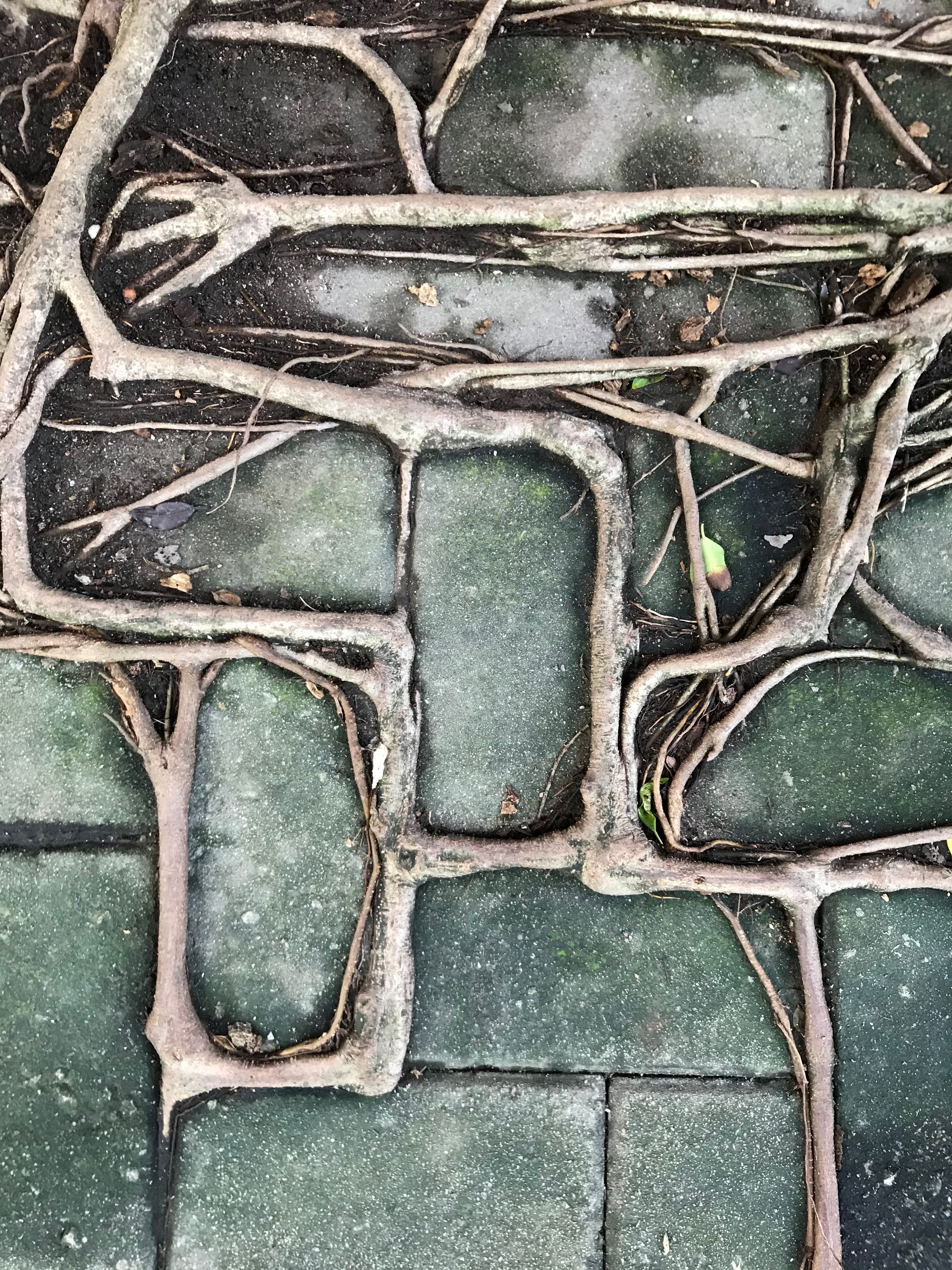
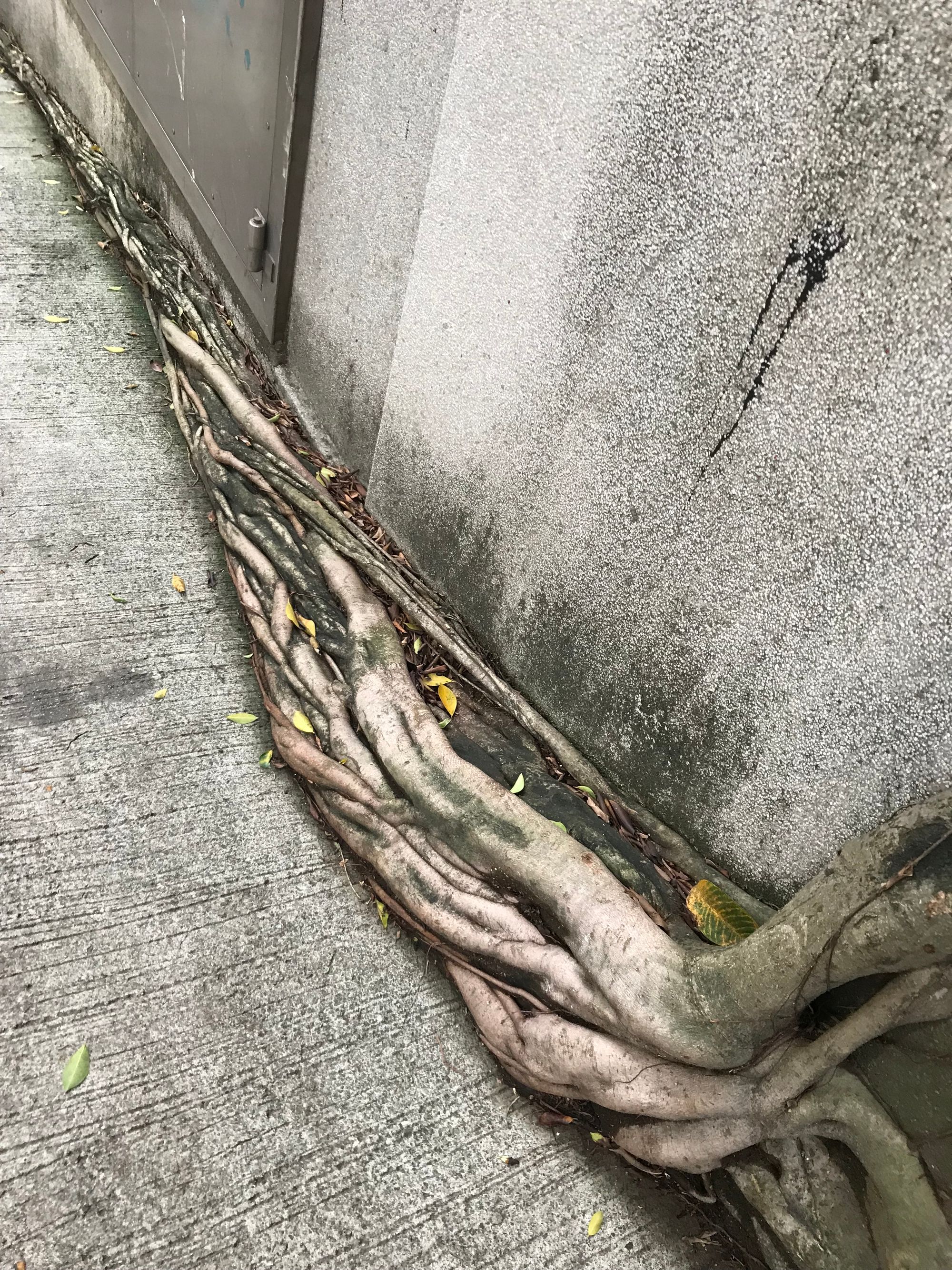
©Wendy Gan 2024
On Forbes Street in Kennedy Town, where 22 banyans grow along a 12-metre-high stone wall, a dense network of roots cascades down the wall anchoring the trees on their precarious perches. The adaptive intelligence of the trees is plain to see. Large and growing out at an angle, they need good purchase on the wall to stabilise themselves. At the base of each trunk is thus a thick matting of roots acting like a buttress that reinforces and broadens the tree base. Then the roots fan out and down, covering the wall in their sprawl of woody, branching tentacles. These trees are natural architects.
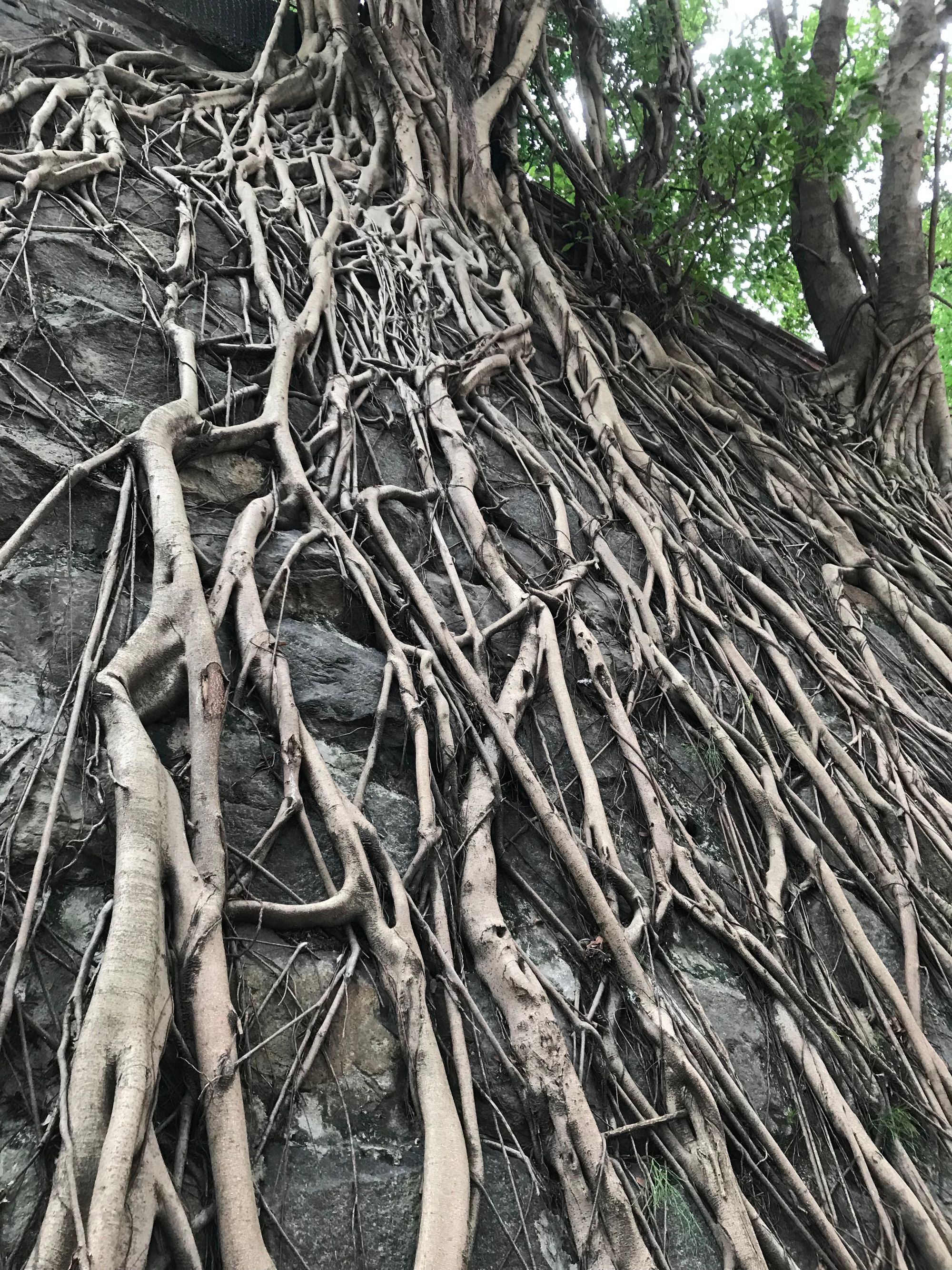

©Wendy Gan 2024
Walking alongside the wall is an opportunity to observe the roots up close. They look both alive and inanimate; at one with the structure but also alien to it, a magnificent being which has overtaken, enveloped, and laid claim to the wall as its own. Weaving a beautiful sheath over the stones, they have remade the space: a rough, lumpen surface has become wondrous.
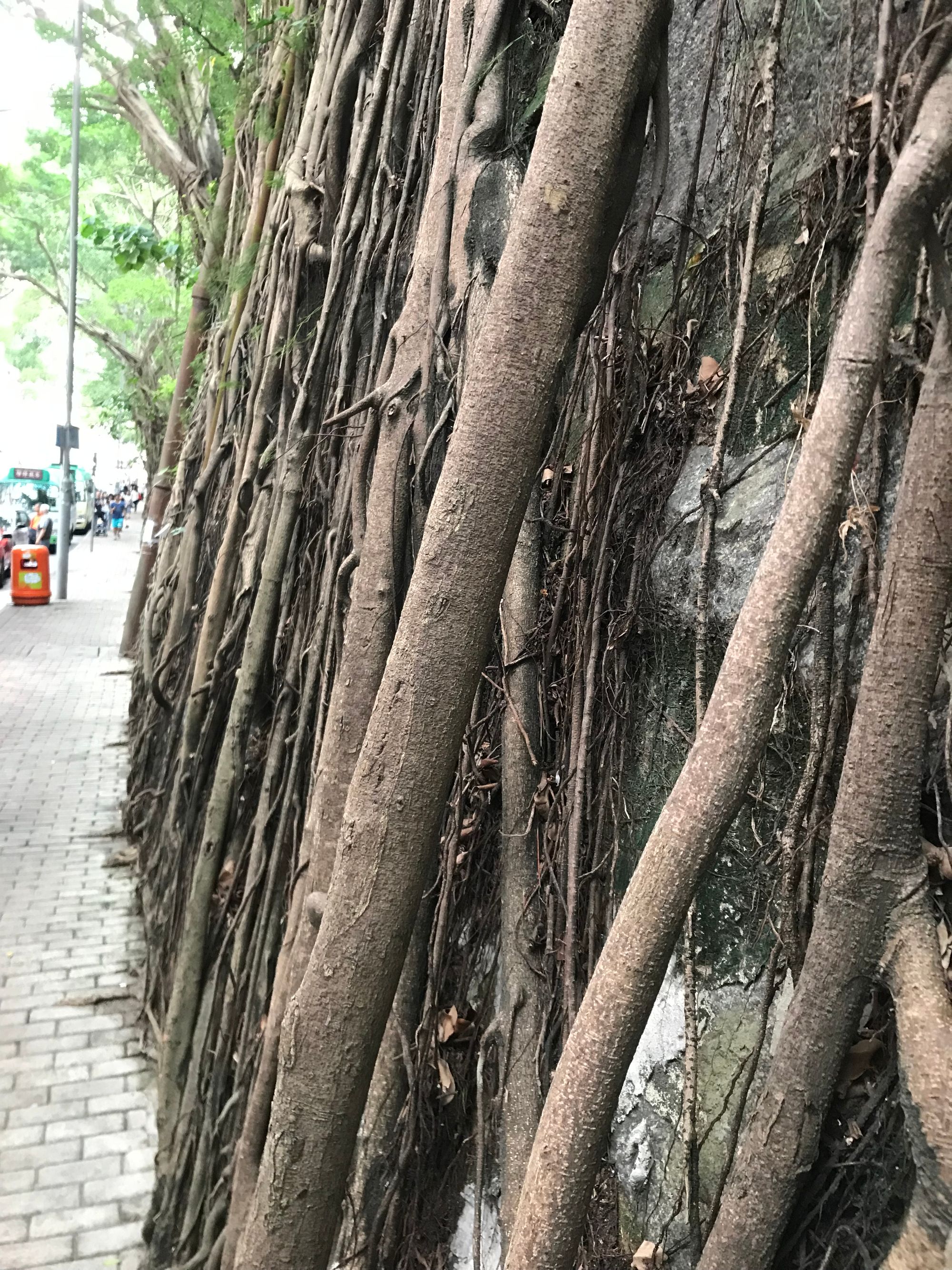
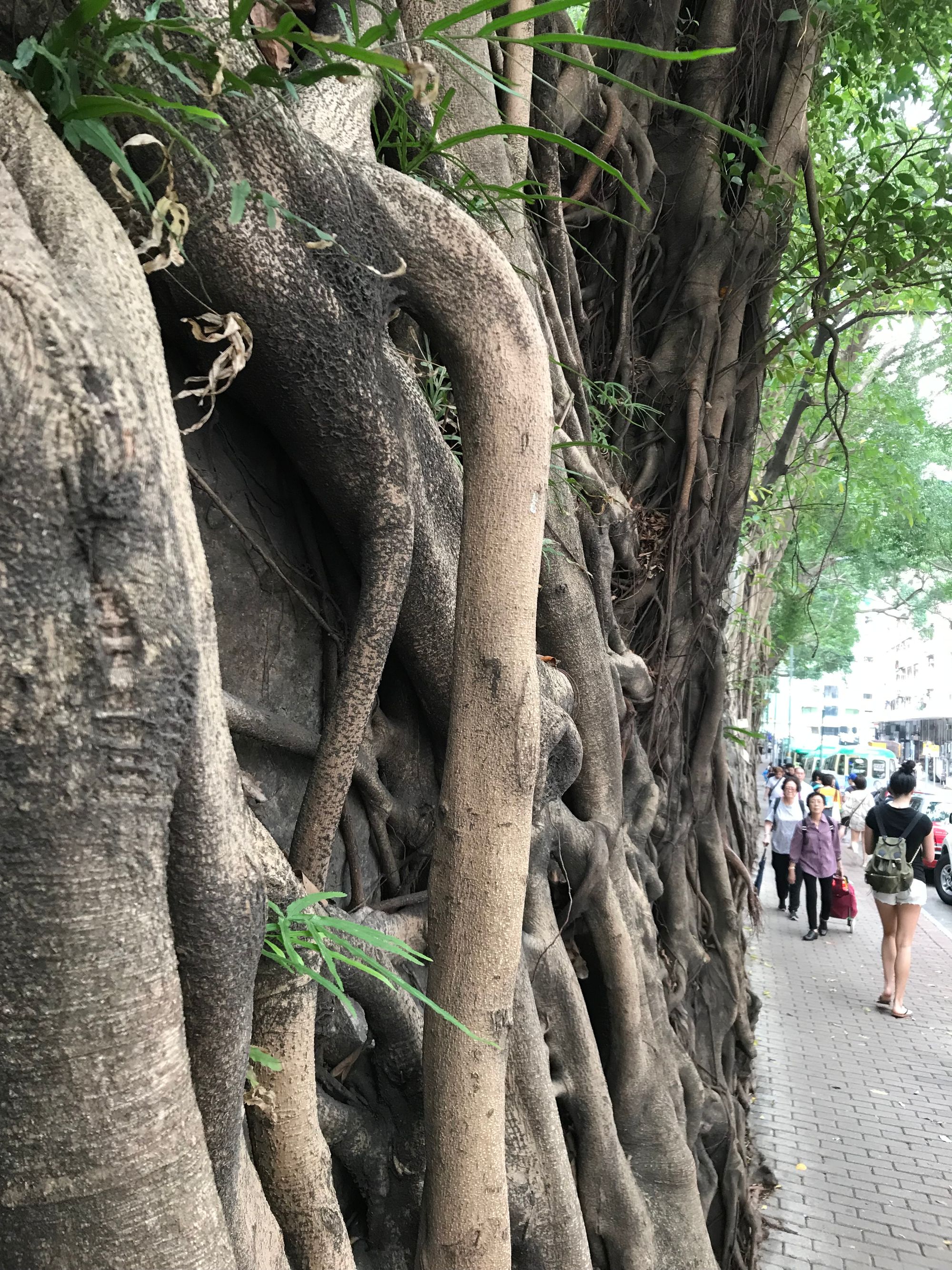

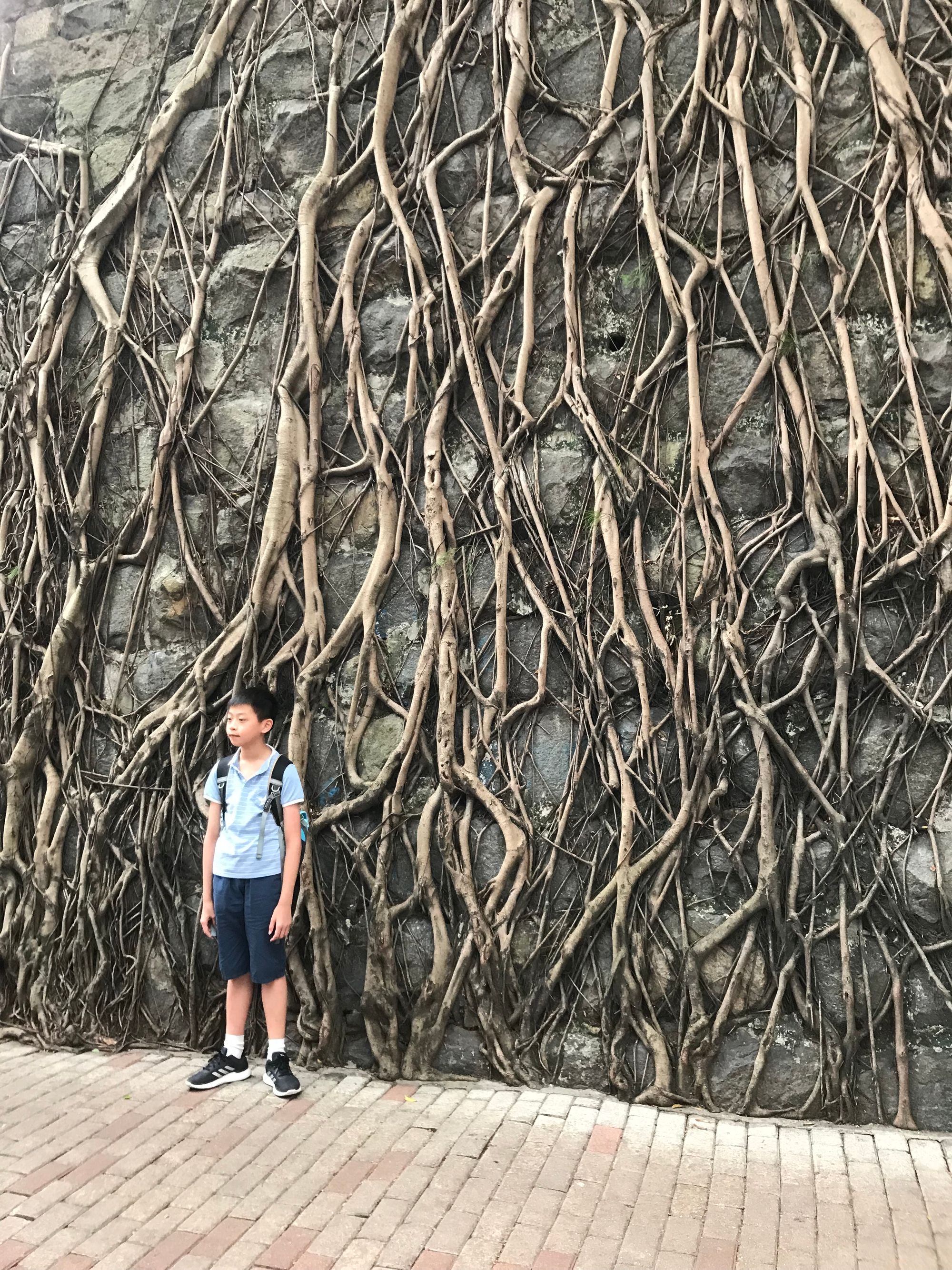
©Wendy Gan 2024

